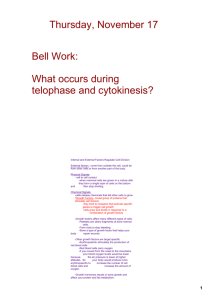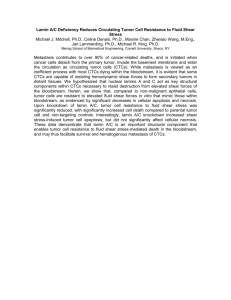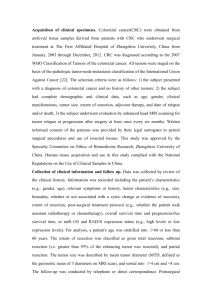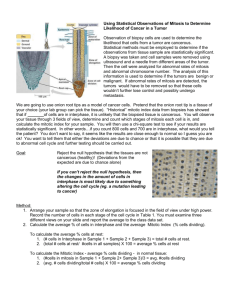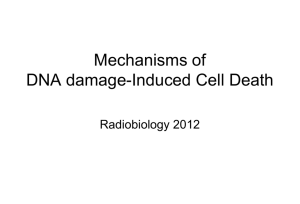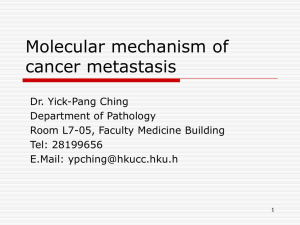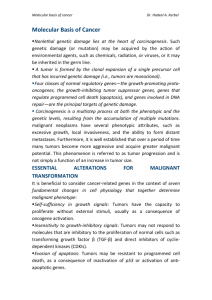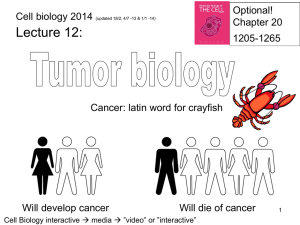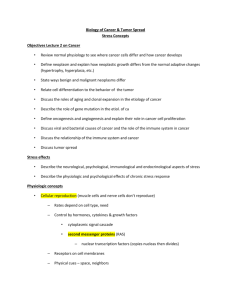Mitosis-targeted anti-cancer therapies: where they stand. KS Chan
advertisement
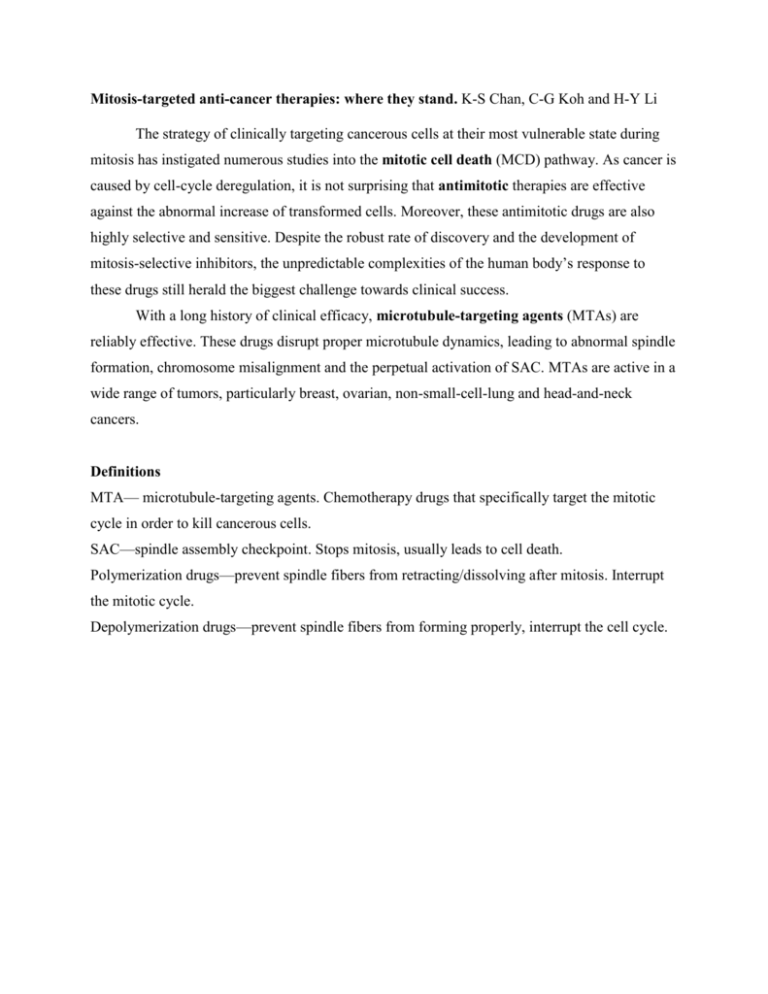
Mitosis-targeted anti-cancer therapies: where they stand. K-S Chan, C-G Koh and H-Y Li The strategy of clinically targeting cancerous cells at their most vulnerable state during mitosis has instigated numerous studies into the mitotic cell death (MCD) pathway. As cancer is caused by cell-cycle deregulation, it is not surprising that antimitotic therapies are effective against the abnormal increase of transformed cells. Moreover, these antimitotic drugs are also highly selective and sensitive. Despite the robust rate of discovery and the development of mitosis-selective inhibitors, the unpredictable complexities of the human body’s response to these drugs still herald the biggest challenge towards clinical success. With a long history of clinical efficacy, microtubule-targeting agents (MTAs) are reliably effective. These drugs disrupt proper microtubule dynamics, leading to abnormal spindle formation, chromosome misalignment and the perpetual activation of SAC. MTAs are active in a wide range of tumors, particularly breast, ovarian, non-small-cell-lung and head-and-neck cancers. Definitions MTA— microtubule-targeting agents. Chemotherapy drugs that specifically target the mitotic cycle in order to kill cancerous cells. SAC—spindle assembly checkpoint. Stops mitosis, usually leads to cell death. Polymerization drugs—prevent spindle fibers from retracting/dissolving after mitosis. Interrupt the mitotic cycle. Depolymerization drugs—prevent spindle fibers from forming properly, interrupt the cell cycle. Metastasis: from dissemination to organ-specific colonization. Don Nguyen, Paula D. Bos and Joan Massagué Metastasis to distant organs is an ominous feature of most malignant tumors but the natural history of this process varies in different cancers. The cellular origin, intrinsic properties of the tumor, tissue affinities and circulation patterns determine not only the sites of tumor spread, but also the temporal course and severity of metastasis to vital organs. At a glance Metastasis progression can be viewed as a stepwise sequence of events, which is mediated by the different classes of metastasis genes. For each type of cancer, the clinical course of these events occurs with distinct temporal kinetics and in unique organ sites. The long latency period of certain tumor types suggests the further evolution or ‘speciation’ of malignant cells in the microenvironments of a particular organ. The acquisition of pro-metastatic functions earlier during primary tumor formation might enable other cancer types to relapse more quickly The organ specificity of metastatic cells is determined by unique infiltrative and colonization functions required after their dissemination from a primary tumor. Definitions Metastasis—the spread of cancer from one affected organ, to a different organ. Latency period—the time period between infection, and when signs and symptoms begin. Apoptosis: Its Significance in Cancer and Cancer Therapy John Kerr, Clay Winterford, Brian V. Harmon Oncologists traditionally have been concerned primarily with cell proliferation. However, apoptosis (the distinctive form of cell death that complements cell proliferation in normal tissue homeostasis) increasingly has been attracting their attention. In particular, the discovery that apoptosis can be regulated by the products of certain proto-oncogenes and the p53 tumor suppressor has opened up exciting avenues for future research. The proposition that apoptosis is a discrete phenomenon that is fundamentally different from degenerative cell death or necrosis is based on its morphology, biochemistry, and incidence. Apoptotic bodies arising in tissues are quickly ingested by nearby cells and degraded within their lysosomes (Fig. 6). There is no associated inflammation with the outpouring of specialized phagocytes into the tissue, such as occurs with necrosis, and various types of resident cells, including epithelial cells (Fig. 6), participate in the mopping-up process. In tumors, viable neoplastic cells usually are involved, as are resident macrophages. However, apoptotic bodies formed in cell cultures mostly escape phagocytosis and eventually degenerate. Scitable – Nature Education. Cancer cells are cells gone wrong — in other words, they no longer respond to many of the signals that control cellular growth and death. Cancer cells originate within tissues and, as they grow and divide, they diverge ever further from normalcy. Over time, these cells become increasingly resistant to the controls that maintain normal tissue — and as a result, they divide more rapidly than their progenitors and become less dependent on signals from other cells. Cancer cells even evade programmed cell death, despite the fact that their multiple abnormalities would normally make them prime targets for apoptosis. In the late stages of cancer, cells break through normal tissue boundaries and metastasize (spread) to new sites in the body. How Do Cancer Cells Differ from Normal Cells? In normal cells, hundreds of genes intricately control the process of cell division. Normal growth requires a balance between the activity of those genes that promote cell proliferation and those that suppress it. It also relies on the activities of genes that signal when damaged cells should undergo apoptosis. Cells become cancerous after mutations accumulate in the various genes that control cell proliferation. According to research findings from the Cancer Genome Project, most cancer cells possess 60 or more mutations. The challenge for medical researchers is to identify which of these mutations are responsible for particular kinds of cancer. This process is akin to searching for the proverbial needle in a haystack, because many of the mutations present in these cells have little to nothing to do with cancer growth.


